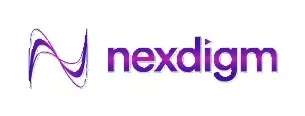- within Employment and HR topic(s)
- with Senior Company Executives, HR and Finance and Tax Executives
- within Employment and HR, Government and Public Sector topic(s)
The introduction of the Employee Welfare Fund (EWF) is a significant step forward for employee rights and financial security in Thailand. Employees will benefit from a formalized support system which addresses critical needs during periods of financial crisis. On the other hand, it has imposed new operational and financial responsibilities for employers to ensure compliance, particularly those managing large workforces.
Employer obligations
Employers with 10 or more employees must register their employees with the EWF and start deducting contributions from October 2025 onwards.
Exemptions from contributing to the EWF
- Employers are exempt from contributing to the EWF if they fall in any of the following categories:
-
- Employer is a non-profit entity under the Labor Protection Act.
- Employer already provides a PVF under the Provident Fund Act.
- Employer has a private financial fund providing benefits equivalent to the EWF.
- Employers exempt may voluntarily choose to contribute in EWF if both employee and employer agree to do so
- If certain employees are ineligible to join an existing PVF or private fund or voluntarily choose not to join, the employer is required to make contributions to the EWF for such employees.
EWF contributions and rates
- From 1 October 2025 to 30 September 2030
-
- Employee contribution - 0.25%
- Employer contribution - 0.25%
- From 1 October 2030
-
- Employee contribution - 0.50%
- Employer contribution - 0.50%
Distribution of EWF contribution funds
- The employee will receive the contribution when he loses the job regardless of the reason like voluntary resignation, dismissal, or redundancy.
- If an employee passes away, the assigned beneficiaries will receive the compensation. If beneficiary is not specified, then the funds will be distributed equally amongst employeeâ€"s legitimate heirs
- The employee is entitled to receive his own contribution, employerâ€"s contribution, and accrued interest from the fund.
Recommendations for employers with existing PVF
Employers having PVF are recommended to update PVF conditions to ensure compliance with EWF exemptions and avoid contributions to both the funds.
- Ensure that the definition of 'employee' under PVF matches with the definition under Labor Protection Act.
- Allow employees to join PVF from their first day of employment.
- Permit employees to re-join PVF after exiting.
Other key details
- There is a maximum wage ceiling for calculating the EWF contributions.
- Contributions must be remitted by 15th of the following month.
- Late or missed payments will be subject to 5% surcharge per month on the unpaid amount.
Our Comments
As the effective date nears, employers must act now to review compliance, register employees, and adjust internal policies, especially if they maintain a PVF. Employers that offer a provident fund may want to consider the potential advantages of participating in the EWF versus making necessary changes to their existing plan to qualify for EWF exemption.
This change requires careful budgeting and financial forecasting as businesses adapt to new responsibilities. Businesses should proactively prepare for the change to maintain compliance and optimize financial practices.
The content of this article is intended to provide a general guide to the subject matter. Specialist advice should be sought about your specific circumstances.
[View Source]

